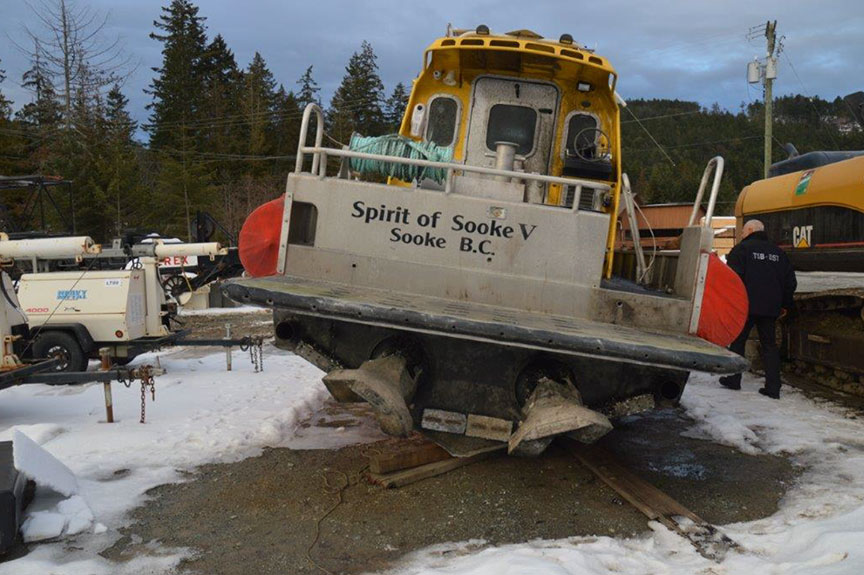Grounding
Search and rescue vessel (Spirit of Sooke)
Christie Point, Sooke Harbour
British Columbia
Search and rescue vessel (Spirit of Sooke)
Christie Point, Sooke Harbour
British Columbia
The occurrence
On , the Royal Canadian Marine Search and Rescue vessel Spirit of Sooke was returning to its station after a training exercise when it ran aground on Christie Point in Sooke Harbour, British Columbia. The vessel had 4 volunteer crew members on board and was proceeding at approximately 27 knots at the time of the grounding. The impact caused serious injuries to all of the crew members. The vessel sustained damage and was temporarily removed from service. No pollution was reported.
Media materials
News release
Misinterpretation of navigational information led to the 2019 grounding of Royal Canadian Marine Search and Rescue vessel
Read the news release
Investigation information
Download high-resolution photos from the TSB Flickr page.
Class of investigation
This is a class 3 investigation. These investigations analyze a small number of safety issues, and may result in recommendations. Class 3 investigations are generally completed within 450 days. For more information, see the Policy on Occurrence Classification.
TSB investigation process
There are 3 phases to a TSB investigation
- Field phase: a team of investigators examines the occurrence site and wreckage, interviews witnesses and collects pertinent information.
- Examination and analysis phase: the TSB reviews pertinent records, tests components of the wreckage in the lab, determines the sequence of events and identifies safety deficiencies. When safety deficiencies are suspected or confirmed, the TSB advises the appropriate authority without waiting until publication of the final report.
- Report phase: a confidential draft report is approved by the Board and sent to persons and corporations who are directly concerned by the report. They then have the opportunity to dispute or correct information they believe to be incorrect. The Board considers all representations before approving the final report, which is subsequently released to the public.
For more information, see our Investigation process page.
The TSB is an independent agency that investigates air, marine, pipeline, and rail transportation occurrences. Its sole aim is the advancement of transportation safety. It is not the function of the Board to assign fault or determine civil or criminal liability.

